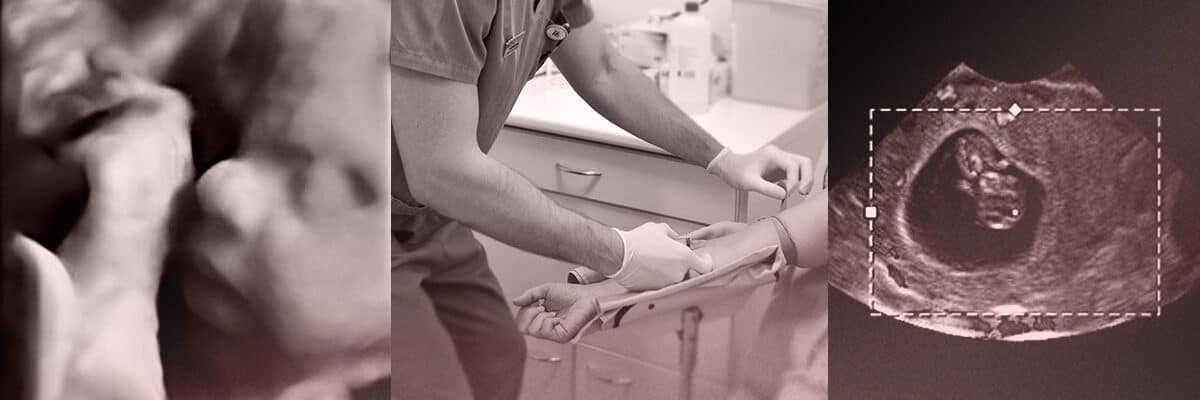Underenhet for høyrisikosvangerskap
Pregnancy is a very rewarding time in a woman's life.

What is a high risk pregnancy?
While pregnancy itself is not an illness, it does require a good control in order to ensure a good outcome in all cases. However when a high risk diagnosis is made, these cases need special care. Fortunately these only make up 10% of pregnancy and today technology and medical science have developed methods for preventing and managing such pregnancies. Therefore it is crucial to identify early on the risk factors and assess their relative significance to the outcome of the pregnancy in order to lower the negative consequences and achieve a happy ending.
There are a number of situations that will make an obstetrician diagnose a pregnancy as high risk. Forexample:
- Maternal health before the pregnancy, including any chronic disease such as diabetes, hypertension, heart conditions, clotting disorders, obese or underweight women, epilepsy, uterine malformation.
- A second group is made up of women who have had problems in previous pregnancies, that is to say pregnancies with maternal or fetal conditions: delayed fetal growth, preeclampsia, previous fetal malformations, premature deliveries, intrauterine deaths, repeat miscarriages.
- A third group consists of fetal or placental causes that arise in a current pregnancy: multiplepregnancy, fetal malformation, delayed fetal growth, threat of premature labor, placental insufficiency.
There is also a group of patients that although they cannot be classified in the usual categories for high risk, they are considered to require specialized care: patients who have become pregnant after some kind of fertility treatment. This group is growing every year, and consists of pregnancies that are highly sought after. Furthermore, they are also associated with advanced maternal age.
Who does integrate the unit?
It is necessary to manage these pregnancies very closely, with a specialized multidisciplinary team and using state of the art technology. This is the reason why we have started a specialized until within our Obstetrics Department that is in charge of caring for these kinds of pregnancies: the Unit for High Risk Pregnancies. This unit is made up of obstetricians that are highly qualified and with proven experience in the management of maternal and fetal disorders, together with a MULTIDISCIPLINARY SUPPORT TEAM: molecular biologists, geneticists, endocrinologists, midwives, pediatricians and anesthesiologists. The continued involvement of the entire team is essential not only for patient care, but also for research and development (publications, conferences, research and teaching) and always using individualized protocols in each case. We trust in high-end TECHNOLOGY : state of the art ultrasound machines and laboratory equipment in order to achieve and process all of the current techniques in prenatal diagnosis. This reduces the stressful waiting for results.

Which are the monitoring techniches for the high risk pregnancy?
The goalis to offer pregnant women with a more individualized and continuous support throughout the more complex situations, which usually cause a certain level of uncertainty and worry. Therefore it is essential that the checkups be fitting and timely in order to find and treat the situations that arise in each specific case.
In our Unit we offer comprehensive care at all times: from the preconception consultation through to the postpartum checkup. For other cases, as well as when the patient is following her pregnancy with another gynecologists, we offer specific appointments in order to confirm a diagnosis or complete one made with a specialist opinion, whether after situations felt by the patient or any problematic events in the pregnancy.
We find that there are two specific aspects in demand recently: prenatal diagnosis andcontrol of fetal well-being. Prenatal diagnosis in two specific situations: in week 12 to identify the ultrasound markers for chromosomal disorders, and in week 20, to carry out the anomaly scan with the goal to rule out the majority of fetal malformations.
Regarding fetal well-being, this is done in the third trimester. During this stage further explorations are needed, as well as the use of specific ultrasound techniques: the study of arterial vascularization in the uterus, umbilical cord and brain, among others, using Doppler, the 3-D scan to see fetal movements and gestures, measurement of cervical length for the prevention of premature labor and even fetal echocardiogram if it is necessary.
All of these aspects get us on our way to achieving healthier pregnancies, relying on the expertise of the professionals at hand, and of course essential emotional support. Our final goal is to reduce risks in order to achieve a healthy delivery and the arrival of a healthy baby.